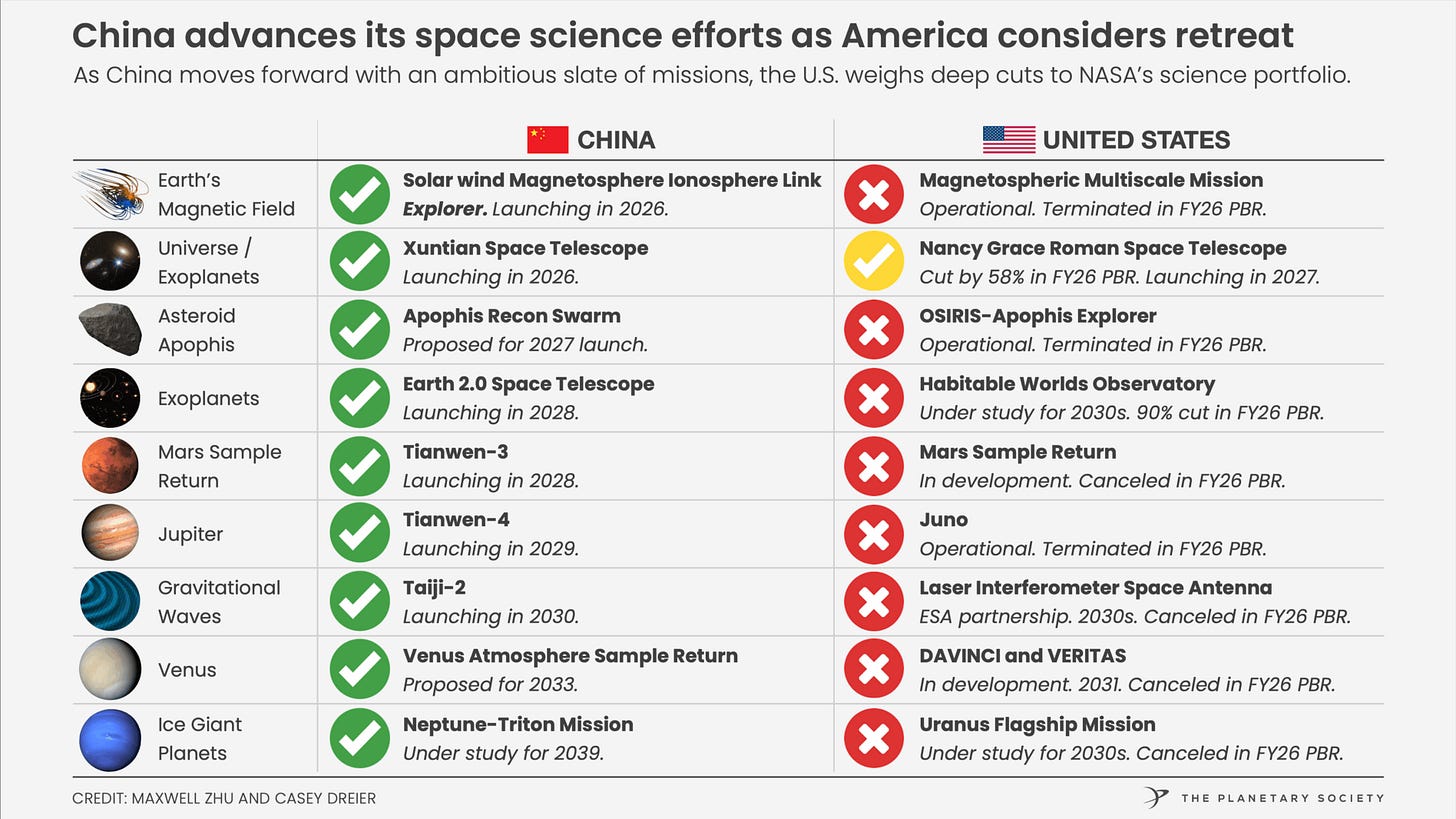Space science is part of the US-China space race
As the Senate holds a hearing on the US-China space race, I’m releasing an op-ed in Payload with Casey Dreier (Director of Space Policy, The Planetary Society) on how space science is part of this competition. Takeaways below; in my next post, I’ll share detailed findings on China’s strategic plans and their upcoming space science missions.
🚀 Three key takeaways:
The US retreats while China advances. While the White House proposes a 47 percent cut to NASA science and the termination of 40+ missions, China is pouring resources into the same missions: Mars Sample Return, Venus atmosphere sampling, Apophis asteroid explorer, gravitational wave observatories, and many more.
China is trying to close the gap. China is pursuing a systematic, well-funded strategy for space science at the Moon and beyond, with eight additional missions planned by 2027, another 16 by 2035, and perhaps 30 or more by 2050.
Guiding this effort is China’s new long-term strategy for space science and its first-ever “decadal survey,” modeled after the US’s decadals.
Wang Chi, the director of the National Space Science Center at the Chinese Academy of Sciences, stated his confidence that the nation will “catch up”.
Congress must act. Both the House and Senate have advanced bipartisan spending bills rejecting these cuts and reaffirming NASA science leadership. Congress must pass these bills before Oct. 1. Otherwise, the administration’s cuts could go into effect, jeopardizing America’s leadership in science and ceding the future to China.
If a continuing resolution is necessary, Congress should include legislative language to explicitly maintain current levels of funding.
👉 Full piece here.



